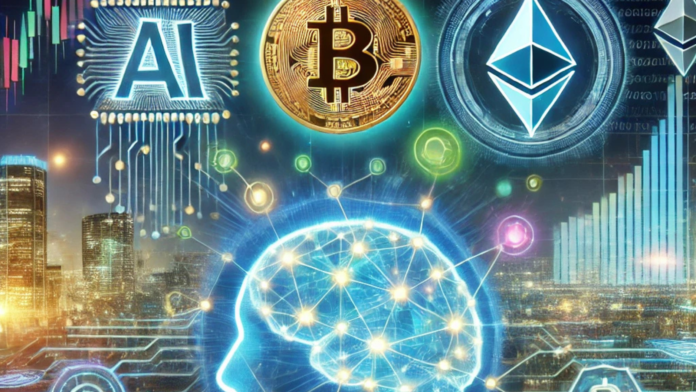As we advance deeper into the digital age, the intersection of artificial intelligence (AI), cutting-edge technology, and cryptocurrency is shaping a transformative future. These three pillars of innovation are redefining how we work, interact, and manage financial systems globally. Here’s a look at their trajectory and the synergies among them.
Artificial Intelligence: The Next Frontier
AI continues to revolutionize industries with its ability to process vast amounts of data, identify patterns, and automate tasks. The future of AI includes several key developments:
1. Generative AI and Beyond
Generative AI, such as ChatGPT and DALL-E, is expected to expand its capabilities, creating immersive virtual experiences and offering highly personalized services. From content creation to education, these tools will reshape productivity and creativity.
2. AI Ethics and Regulation
As AI becomes more pervasive, ethical concerns surrounding data privacy, bias, and accountability will prompt stricter regulations. AI governance frameworks will be essential to ensure fair and responsible usage.
3. Integration with IoT and Edge Computing
AI will become a central component of the Internet of Things (IoT), processing real-time data on edge devices. This will improve efficiency in industries such as healthcare, manufacturing, and smart cities.
4. Decentralized AI Systems
Decentralized AI, powered by blockchain, will enable secure and transparent data sharing, reducing reliance on centralized tech giants and fostering user autonomy.
Technology: The Core Driver
The broader technological landscape will play a vital role in shaping the future, with notable trends such as:
1. Quantum Computing
Quantum computing promises exponential leaps in computational power, revolutionizing sectors like cryptography, drug discovery, and financial modeling. It could also pose challenges to current encryption methods used in cryptocurrencies.
2. 5G and Beyond
Enhanced connectivity through 5G and future networks will drive the adoption of technologies like AR/VR, autonomous vehicles, and decentralized systems.
3. Green Technology
Sustainability will dominate the tech agenda, with innovations focusing on renewable energy, energy-efficient devices, and carbon-neutral operations.
4. Metaverse Expansion
The metaverse will evolve as a blend of immersive digital environments powered by AR, VR, blockchain, and AI. It is expected to drive new economic models and reshape entertainment, work, and commerce.
Cryptocurrency: A Financial Revolution
Cryptocurrency is no longer a niche asset class but a growing force in global finance. Its future holds significant potential:
1. Mainstream Adoption
Corporations and governments are recognizing the utility of cryptocurrencies. Payment systems, investment portfolios, and remittances are increasingly incorporating digital assets like Bitcoin and stablecoins.
2. Central Bank Digital Currencies (CBDCs)
CBDCs are emerging as a counterpart to private cryptocurrencies, offering state-backed digital money that combines the benefits of blockchain with regulatory oversight.
3. Decentralized Finance (DeFi)
DeFi platforms are disrupting traditional financial services by offering decentralized lending, borrowing, and trading. This innovation democratizes access to financial tools for the unbanked and underbanked populations.
4. Regulatory Clarity
The future of crypto hinges on regulatory frameworks that balance innovation and protection. Clear rules on taxation, anti-money laundering, and security will foster greater trust and adoption.
Convergence: AI, Crypto, and Advanced Tech
The integration of AI and cryptocurrency is particularly promising. AI-powered smart contracts, autonomous financial agents, and predictive trading algorithms are already transforming the blockchain ecosystem. Meanwhile, blockchain provides a secure infrastructure for AI applications, ensuring data integrity and decentralized computation.
Technological advancements like quantum-resistant cryptography will address emerging challenges, ensuring the resilience of blockchain and cryptocurrencies in the face of quantum computing threats.
Challenges Ahead
While the potential is vast, challenges such as cybersecurity threats, energy consumption, and regulatory fragmentation must be addressed. Collaboration between governments, tech companies, and academia will be critical to overcoming these hurdles.
Conclusion
The future of AI, technology, and cryptocurrency is interlinked, promising a world of unprecedented opportunities. As these fields evolve, they will not only redefine industries but also reshape societal norms, economies, and global connectivity. Stakeholders must navigate this transformation thoughtfully to harness its benefits while mitigating risks.



















